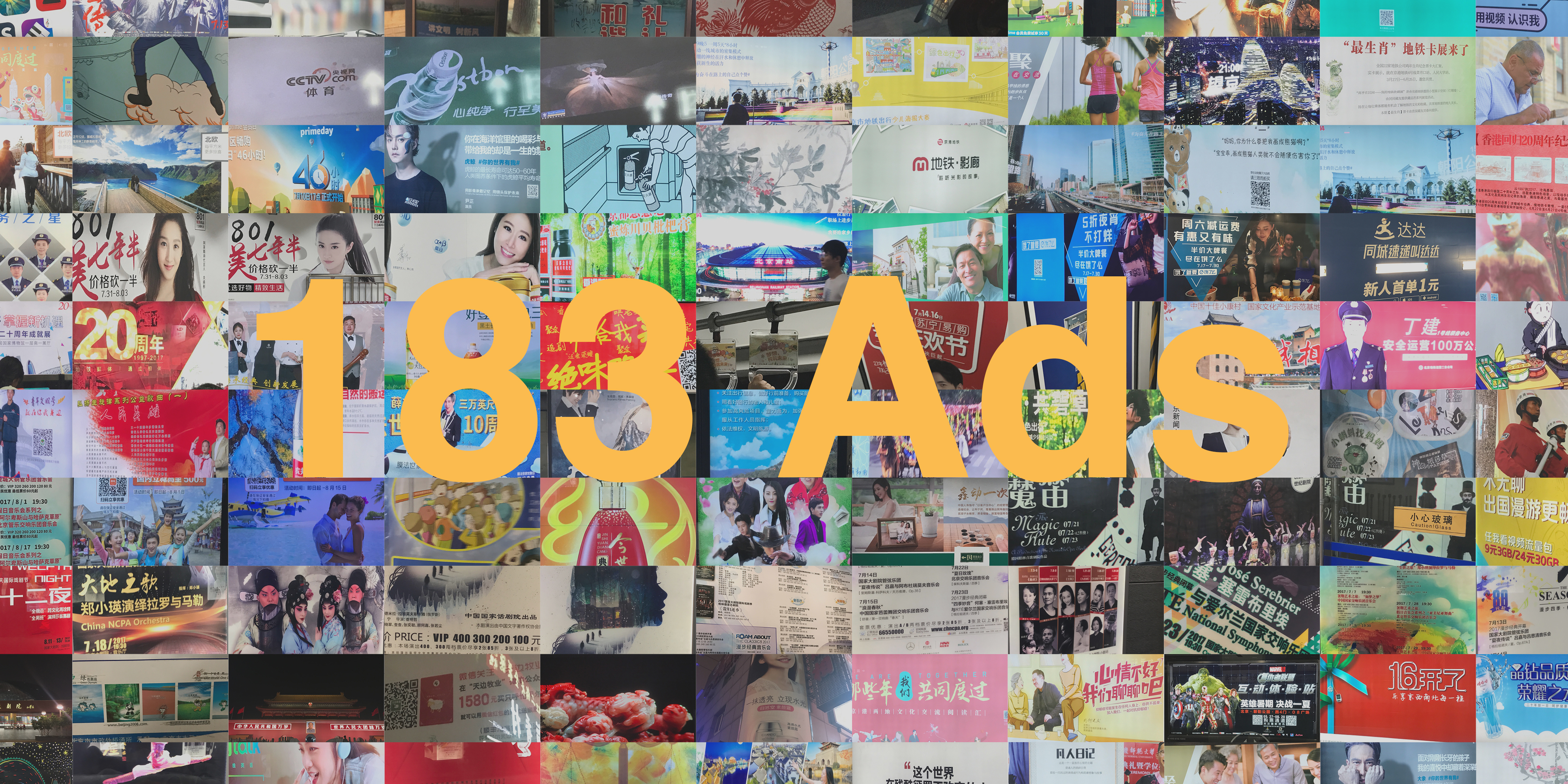
Neuromarketing study: Advertising in Beijing, China
As our team was again abroad, we took the occasion to look at the advertisements that were around them. Our specialists analyzed the ads in the city of Beijing. They did an analysis of the neuromarketing triggers used in the ads. By doing so, they understood how local marketers fascinate the Chinese consumers. Here are the insights of their research.
Research process

Our specialists went in the streets of Beijing. They captured all ads they saw. They captured billboards, ads in the public transportation system, ads placed on buses. Besides the street view, the team also looked at the advertisements displayed online. To do so, they visited the top 50 of the most visited websites by Chinese users. In total they analyzed 183 ads. The ads fall into four categories: billboards (59% %), out of home screens (2,7%) online (34,4%) and transportation (3,8%).
We base this study on a neuromarketing framework developed by author Sally Hogshead. This framework categorizes each communication message with a system of 7 triggers. To fascinate the viewer, an ad needs to have both a primary and secondary trigger. The use of two triggers gives a depth to the message, that creates a higher retention in the viewer’s mind. The 7 fascination triggers of this framework are:
- Power: take command.
- Passion: attract with emotion.
- Mystique: arouse curiosity.
- Prestige: increase respect.
- Alarm: create urgency.
- Innovation/Rebellion: change the game.
- Trust: build loyalty.
The results
Primary Trigger
The most used primary trigger is “Alert” (28%). This trigger creates a sense of urgency in the user’s mind. To do that, marketers use warnings or special discounts. These types of messages push the viewer to consumption.
The second position for the most used primary trigger is for the trigger “Trust” with 19,8%. The “trust” trigger fascinates people by building loyalty. At Enigma, we always explain that you shouldn’t use this trigger in advertising. Until now, we never saw an advertising campaign, that uses the “trust” trigger, which performed. Trust is not something that you brag about, it’s something that you experience. You don’t tell people that you are reliable to make them believe it. You are reliable and then people feel it. And from there they believe it.
The third position is for the trigger “Mystique” with 14,3 %. These types of ads arouse curiosity by hiding elements or by being enigmatic.
“Innovation/Rebellion” is the least used primary trigger (1,6%). We see here the impact of the Chinese culture. Many Chinese consumers do not see provocation as signs of success.
Secondary Trigger
Most of the ads that we analyzed do not have a secondary neuromarketing trigger (70,3%). What this means is, that most ads are monotonal and speak with only one voice. They don’t use the power of human communication. These ads are too bland to create a strong fascination in the viewership.
The triggers “Alert”, “Trust” and “Mystique” share the second position. With 6% they are in the second position for the most used secondary trigger.
Interestingly the trigger “Innovation” was never used as a secondary trigger. And this is true for all 183 ads we analyzed. This trigger is also sometimes called “Rebellion”. The use of this trigger fascinates the viewership by changing the game. With this trigger you’re doing everything different than your competition. Here again, we see the impact of the Chinese culture in the usage of the neuromarketing trigger.
The impact of the party
The content of the ads we collected in Beijing is also especially interesting. Many of the ads that are in the streets, look like traditional ads from businesses but in fact, they are not. Many ads are prevention messages. The state or other politically affiliated organisms spread these ads out. Our translator told us, that most of the ads she sees in the streets are politically driven. This is where the triggers “Alert” and “Trust”, make sense. The state tries to push certain behaviors. They do so by showing messages that either creates a sense of urgency (“Alert” trigger). Or they try to build loyalty to convince (“Trust” trigger).

Online is mostly about alert
Most of the online ads use “Alert” as their primary trigger (50,8%). The second most used primary trigger in online advertisement is “Prestige” (9,5%).
What we see here is that the party seems to have a smaller impact on the online advertisement. Most of the ads that we collected on the top 50 most visited websites in China are about special promotions or sales. They were less politically driven. These sales of course create a sense of urgency by using the “Alert” trigger.
International comparison
Let’s compare the most used primary trigger between China, the United States, and Thailand. In New-York and Bangkok “Alert” was also the most used primary trigger. In both these cities, the percentage was around 6 points lower than in China, for Bangkok it was 21,6% and for New-York 22,2%. At this stage of our international comparison, we want to share a hypothesis. It seems that there is a world wide belief that marketers share. They seem to believe that you need to create a sense of urgency to create an impact with your advertisements.
At Enigma, we believe that there are plenty ways to fascinate consumers. The model we use gives us 49 different ways to fascinate people. This is possible by combining 2 of the 7 neuromarketing triggers. We believe that there is an opportunity here for brands. There is an opportunity to stand out of the shouting and warning ads. You can do so by using one of the 6 others fascination triggers as the primary one.
It is also interesting to note that ads in Asian cities rely more easily on “Trust”. It is the second most used trigger in Beijing and third in Bangkok. In New York this trigger is only in the fifth position of the most used primary trigger. We will see if we can transform this assumption in a verified insight, when we will add more cities to our study.
More about neuromarketing
As Enigma has projects all around the world we were able to already run 3 similar studies in other big cities. This year we have presented similar studies for the cities of Bangkok and New-York. We will continue to compare how different cultures use neuromarketing triggers to fascinate the public.
Last year, our lab did a more in depth study with 59 additional control points for the Swiss market across multiple industries. This study called the Full Potential Marketing Study 2016 is available for download.
To stay tuned about our next studies, join our newsletter by using the form right below.